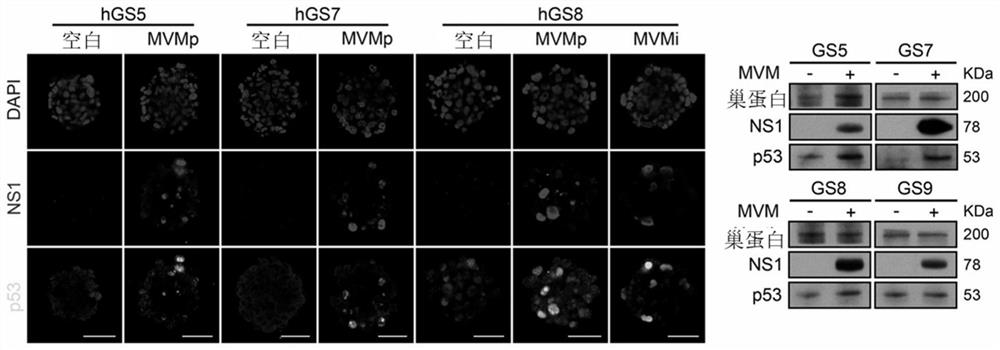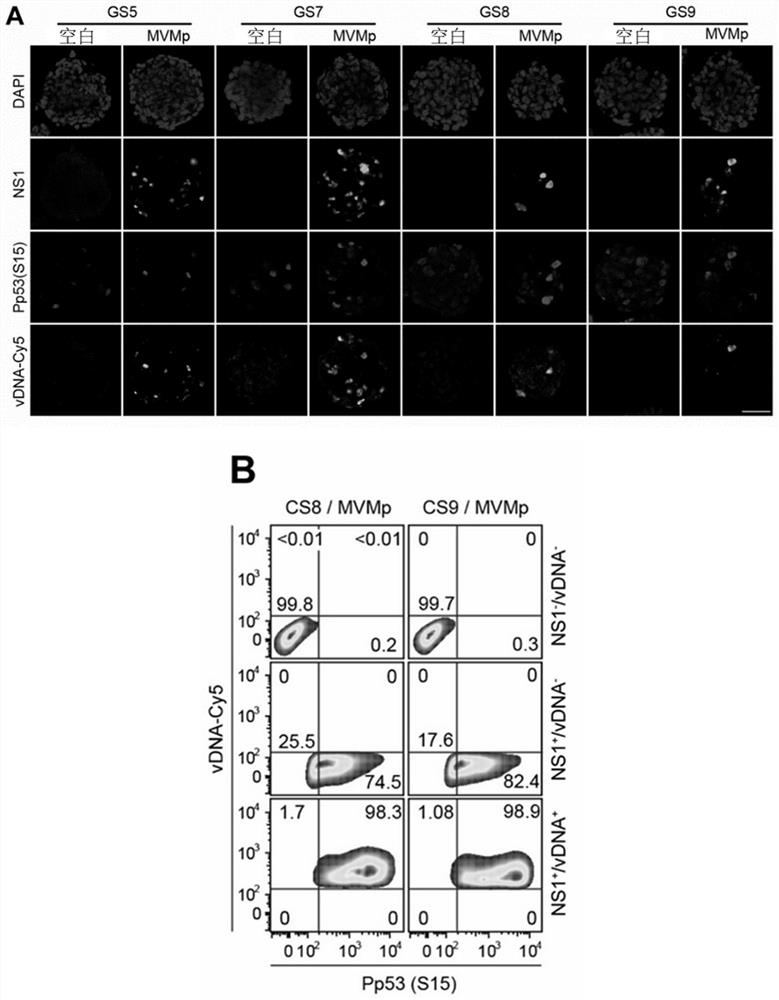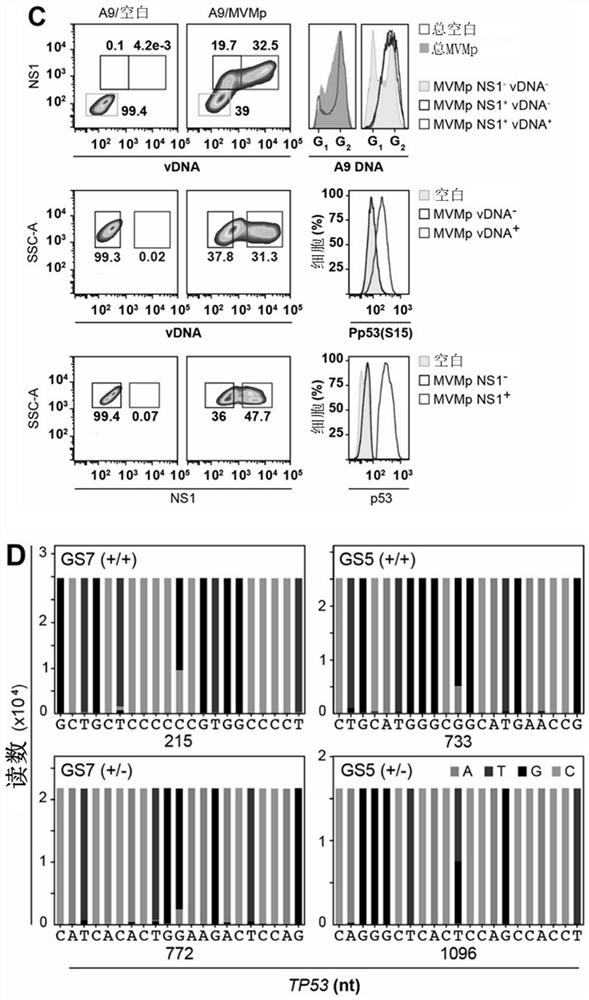Treatment of cancer harboring mutations in the tp53 gene and/or post-translational modifications in the p53 protein with parvoviruses
A cancer and gene technology, applied in the field of oncology, can solve problems such as complex mechanism of action
- Summary
- Abstract
- Description
- Claims
- Application Information
AI Technical Summary
Problems solved by technology
Method used
Image
Examples
Embodiment 1
[0063] Example 1. Materials and methods
Embodiment 11
[0064] Example 1.1. Cells and cell culture.
[0065] Human glioblastoma stem cells were obtained from tumor explants provided by the Neurosurgery Service of Ramón y Caial Hospital, Madrid. The explants were diagnosed as grade IV glioblastoma by histochemistry performed by the pathology service at the same hospital. Informed consent from the patients was obtained in all cases and approval was obtained from the Institutional Ethics Committee of the Ramón y Caial Hospital, Madrid. Further studies in tissue culture were authorized by the Ethics Committee of the University of Madrid and the Center for Molecular Biology of Severo Ochoa (Centrode Biología Molecular Severo Ochoa, CSIC-UAM), respectively. Biopsies collected at the bottom of the operating room were dissociated mechanically and enzymatically, and finally the cell suspension was filtered to culture in DMEM medium: F12 (1:1) supplemented with various factors.
[0066] On the other hand, established mouse, human cancer an...
Embodiment 12
[0077] Example 1.2. Flow Cytometry.
[0078]In all experiments, at least 30,000 events / sample were acquired in a FACS CantoII cytometer (BD Biosciences), which were preselected in a region based on their size and complexity (FSC and SSC parameters, respectively) to exclude cells Debris and other contamination particles. Events were acquired using CellQuest software (BD Biosciences) and data were analyzed using FlowJo software (Tree Star). Cell cycle analysis was performed according to [Gil-Ranedo, J., Hernando, E., Riolobos, L., Dominguez, C., Kann, M., and José M. Almendral. 2015. The mammalian cell cycle regulates nuclear parvovirus capsid assembly. Plos Pathogens, 11;11(6):e1004920]. For staining, cells were permeabilized with PBS+0.1% tritonX-100 for 10 min at room temperature and then blocked with the same buffer supplemented with 1% FCS for 20 min. Cells were resuspended in PBS (pH 7.2) + 0.5% BSA, primary antibodies indicated in the figure were added, and stirred at ...
PUM
 Login to View More
Login to View More Abstract
Description
Claims
Application Information
 Login to View More
Login to View More - R&D
- Intellectual Property
- Life Sciences
- Materials
- Tech Scout
- Unparalleled Data Quality
- Higher Quality Content
- 60% Fewer Hallucinations
Browse by: Latest US Patents, China's latest patents, Technical Efficacy Thesaurus, Application Domain, Technology Topic, Popular Technical Reports.
© 2025 PatSnap. All rights reserved.Legal|Privacy policy|Modern Slavery Act Transparency Statement|Sitemap|About US| Contact US: help@patsnap.com



